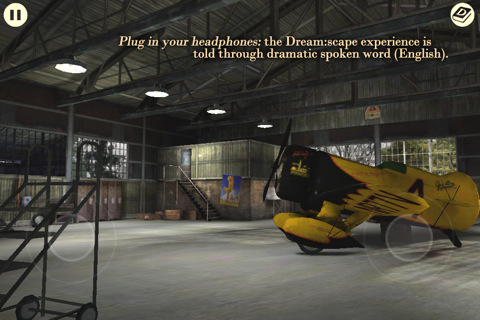 Dream:scape [$1.99] is a story of death and redemption, a haunting narrative brought to life with Unreal-powered graphics and pitch-perfect sound design. In it, you play Wilson, a coma patient on the verge of death who is given the chance to explore his own memories and discover the truth of a secret that’s haunted him throughout his life.
Dream:scape [$1.99] is a story of death and redemption, a haunting narrative brought to life with Unreal-powered graphics and pitch-perfect sound design. In it, you play Wilson, a coma patient on the verge of death who is given the chance to explore his own memories and discover the truth of a secret that’s haunted him throughout his life.
To help you find your way through Wilson’s memories, you’re given a diary that notes the memories and images you discover on your journey. It will guide you through his dreamscape, a place of deep foreboding. You’ll come across meaningful places where voices from the past will give you pieces of the secret, and you’ll feel the world close in around you as you approach the final revelation. For an hour or more, you’ll be immersed in Wilson’s world.
I wanted so much to love Dream:scape. It has all the makings of a classic, with a thoughtful story and fantastic atmosphere. The sound and music are amazing—you’re cheating yourself if you play without headphones—and even the voice acting is strong. If you can go into the game wanting only these things, you’ll be impressed.
But if you’re looking for a game that’s enjoyable to play, you should look elsewhere. Judged only on its technical merits, Dream:scape is a mess. I played it first on an iPad 2. The device can play the game with a high and steady framerate, but the textures look strangely low resolution and the control is abysmal. The on-screen controls are slightly too large and awkard to use comfortably. The camera control can’t be inverted, and while you can drag to pan the camera, you’ll bump into the on-screen camera control regularly.

The controls feel much better on smaller devices, but you’ll probably run into crashes on anything but the newest generation of hardware. If this happens to you, try resetting your phone before playing – this game needs a lot of available memory. Given the option, I’d recommend only playing on an iPhone 4 – they’ve got the power to run Dream:scape well, and the textures look much better on a Retina display. I suspect I would have enjoyed this game much more if I’d only played it on an iPhone 4.
No matter what you’re playing on, though, the gameplay just isn’t very inspiring. It can be hard to find your way around, and the in-game map isn’t very helpful. Also, a good chunk of Dream:scape’s short experience is spent backtracking. For example, I noticed a hammer sitting on a box early in the game. It was obviously important, but I couldn’t pick it up. A few minutes later, I found a spot where I needed a hammer, so I had to find my way back, grab it, and return. This sort of thing continues throughout the game, so there’s really no point exploring anything other than the area you’re meant to go. You’ll get through every area by the end, and there are no secrets to find or achievements to unlock.

Worse are the game’s few moments of action. They require swipes across the screen that only register if you do them in the exact short, sharp manner the game expects. If you fail, you’re sent back to the last checkpoint with no indication of how to do better. This may be more of an interactive narrative than a game, but all these frustrations get in the way.
Dream:scape is so close to being amazing that it’s hard for me to say this, but the problems just killed what enjoyment I would have otherwise had. If it receives an update to address the control issues, the crashes and the texture problems, then yes, absolutely buy it and experience it. Otherwise, you’ll need to judge whether you’d find interesting story worth muddling through the often frustrating gameplay. It’s not perfect, but I’m glad I got to enjoy the audio-visual experience and haunting story.
It’s exciting that the tiny team at Speedbump Studios was able to put this game together in just a few months. We’re obviously seeing the tip of the iceberg of the sorts of interactive 3D experiences we’ll be seeing on our iOS devices in the months and years to come. I’m just not sure this one was quite ready for its debut.